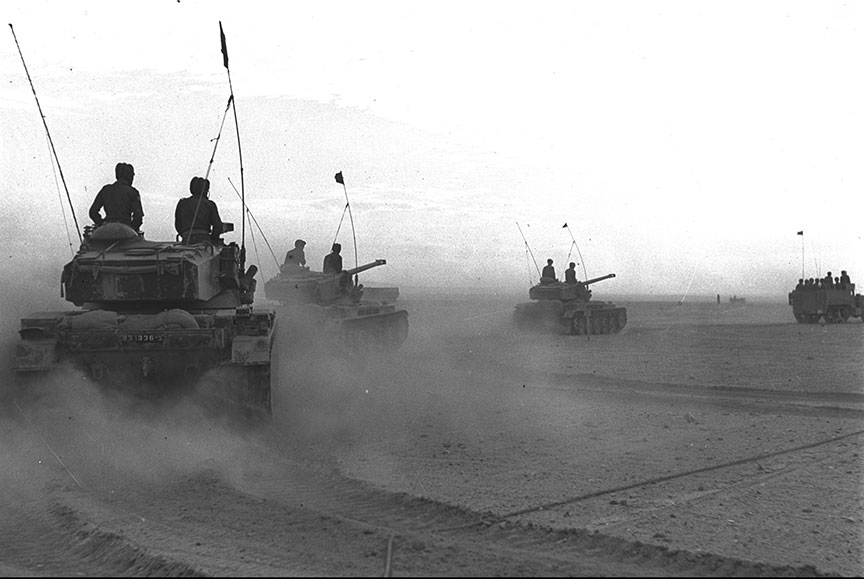1956-SINAI CAMPAIGN

Barrier between Jaffo and Tel Aviv
In 100 hours, Israeli forces captured the Sinai desert and routed the Egyptian army. Under intense US pressure, Israel withdrew from Sinai the following year.
In the aftermath of the War of Independence, the British, Americans, and French collectively agreed not to provide significant quantities of armaments to either the Israelis or the Arabs. However, in October 1955, Egypt signed a notable arms deal with Czechoslovakia, securing substantial military equipment for themselves. This agreement, combined with ongoing Fedayeen raids in southern Israel, led Israeli leaders to conclude that action must be taken to alleviate the situation before Egyptian forces could achieve strategic dominance.
On July 26, 1956, President Nasser of Egypt nationalized the Suez Canal, providing the British and French—who had already been supplying Israel with advanced weapons—with a motive to cooperate with Israel's attack on Nasser. This decision significantly impacted global shipping and trade, as the canal was a crucial passageway for maritime traffic.
On October 29, 1956, Israeli forces launched an attack on Egyptian forces in the Sinai during what came to be known as the Suez Crisis. Israeli forces swiftly defeated the Egyptians, losing only 180 soldiers, inflicting over 1,000 fatalities on the Egyptian side, and capturing over 6,000 Egyptian prisoners of war. The Israeli forces halted their advance 10 miles short of the canal, creating a pretext for the British and French troops to intervene ostensibly to protect the waterway.
However, under sustained American pressure, Israel was compelled to withdraw from the Sinai Peninsula and the Gaza Strip. In exchange, the Straits of Tiran, a crucial maritime passage for Israel, were opened for Israeli shipping, and a United Nations force was placed in the Sinai and Gaza Strip as a buffer to further conflict.
 >
>